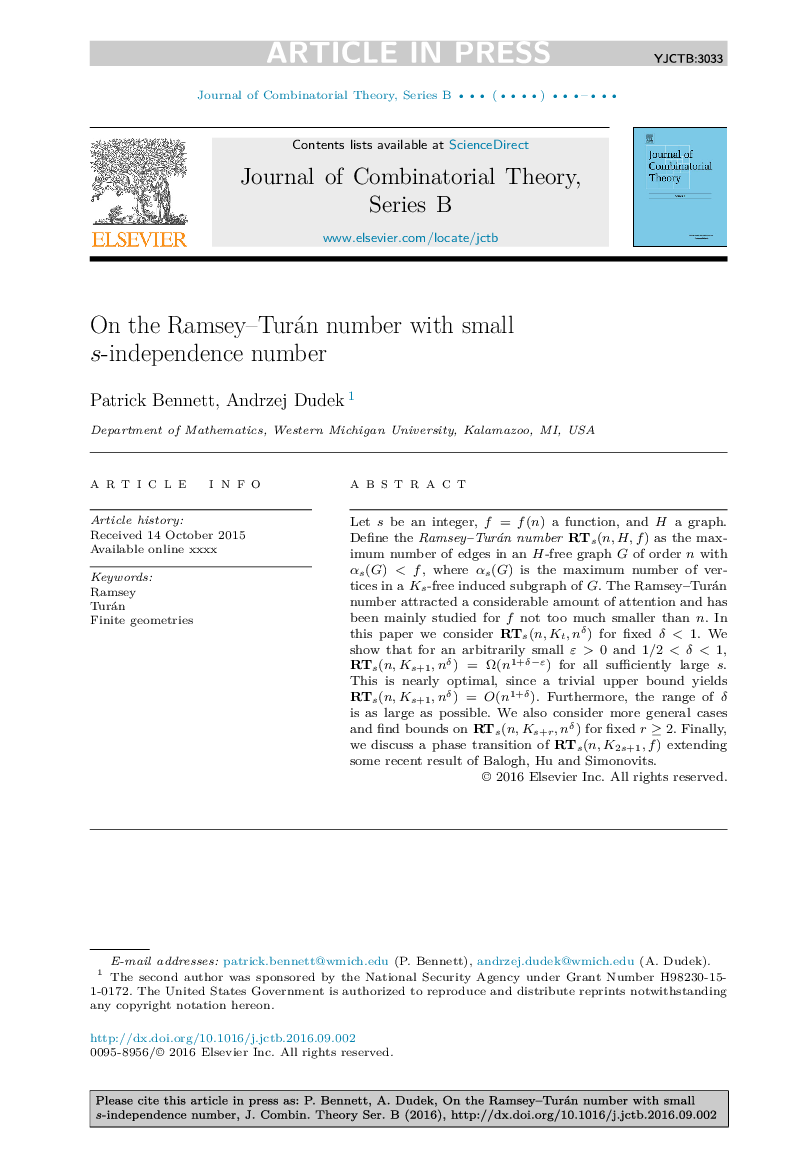| Article ID | Journal | Published Year | Pages | File Type |
|---|---|---|---|---|
| 5777674 | Journal of Combinatorial Theory, Series B | 2017 | 29 Pages |
Abstract
Let s be an integer, f=f(n) a function, and H a graph. Define the Ramsey-Turán numberRTs(n,H,f) as the maximum number of edges in an H-free graph G of order n with αs(G)0 and 1/2<δ<1, RTs(n,Ks+1,nδ)=Ω(n1+δâε) for all sufficiently large s. This is nearly optimal, since a trivial upper bound yields RTs(n,Ks+1,nδ)=O(n1+δ). Furthermore, the range of δ is as large as possible. We also consider more general cases and find bounds on RTs(n,Ks+r,nδ) for fixed râ¥2. Finally, we discuss a phase transition of RTs(n,K2s+1,f) extending some recent result of Balogh, Hu and Simonovits.
Keywords
Related Topics
Physical Sciences and Engineering
Mathematics
Discrete Mathematics and Combinatorics
Authors
Patrick Bennett, Andrzej Dudek,
